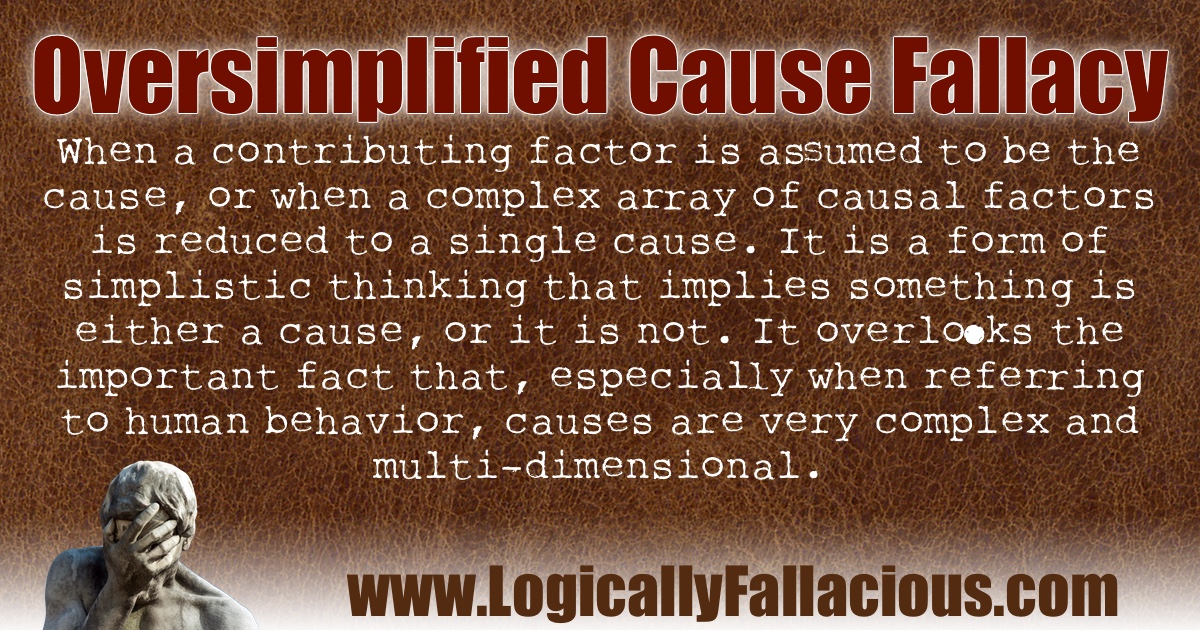Description: When a contributing factor is assumed to be the cause, or when a complex array of causal factors is reduced to a single cause. It is a form of simplistic thinking that implies something is either a cause, or it is not. It overlooks the important fact that, especially when referring to human behavior, causes are very complex and multi-dimensional.
Logical Form:
X is a contributing factor to Y.
X and Y are present.
Therefore, to remove Y, remove X.
Example #1:
P1. Lead poisoning can contribute to violent behavior.
P2. Many inner city children have dangerous levels of lead in their blood.
C. Therefore, violent crime in the inner city can be solved by curing the lead problem.
Explanation: We already established that lead poisoning can contribute to violent behavior (note the probabilistic language). This means that there is some unspecified chance. We are taking an unreasonable leap in suggesting that violent crime can be solved (binary language) by curing the lead problem. And, in case you missed it, there is question begging here in assuming that violent behavior leads to violent crime.
Example #2:
P1. A sedentary lifestyle contributes to obesity.
P2. People have become more sedentary in the last few decades.
C. Therefore, the rise in obesity can be fixed by people getting more exercise.
Explanation: We made the leap from "contributes" to "can be fixed." At best, we can conclude that the problem of obesity can be mitigated by people getting more exercise.
Example #3:
P1. Smoking has been empirically proven to cause lung cancer.
C. Therefore, if we eradicate smoking, we will eradicate lung cancer.
Explanation: Even though it is reasonable to consider smoking a "cause" of lung cancer versus a "contributing factor" to lung cancer, assuming it is the only cause is fallacious.
Tip: Establishing causality is extremely tricky. Unless you are stating an established fact, start using more probabilistic language such as "contributes to," "leads to," "has been known to reduce the effects of," or similar language.
